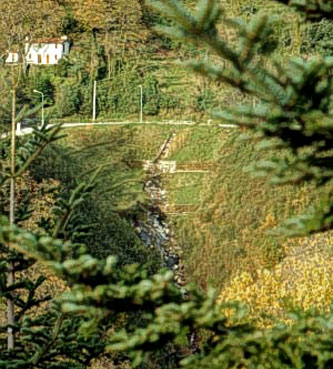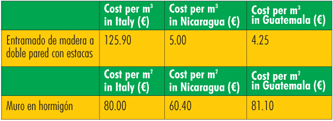 COUNTRY OF ORIGIN
COUNTRY OF ORIGIN• Italy
Soil Bioengeneering
Results
Bioengineering techniques reflect a completely different perspective from typical civil engineering systemizations of landslides or river banks. These types of techniques, in fact, make every effort to limit the use of material that is extraneous to the target area’s natural environment. The aim is to leave as few visible traces of the intervention as possible. These techniques, therefore, are not based on the idea that interventions should be clearly visible for everyone to admire so that the amount of money and effort that has gone into a project can be appreciated. The approach relies on the presence of a spirit of innovation among local institutions, which, however, often prefer to back solutions that are much more spectacular and seemingly more expendable in terms of consensus.
An important qualitative effect of bioengineering interventions is the promotion of scientific research through surveys and experimentation of native material, to see if it can be used in the project. Scientific research and work operations necessarily require the involvement of universities and specialists from local institutions (agronomists, forestry technicians and botanists, etc.), who play a vital role in collecting information and critically assessing any new solution.
The use of local workforce rather than sophisticated and expensive technologies makes a great impact in economical terms. Apart from encouraging the involvement and consensus of local communities, this aspect also produces considerable savings, especially in less industrialised nations. 
This can be seen by comparing forecast costs for constructing double wooden live crib wall (one of the most used typologies in bioengineering), green gabions (rectangular metal nets filled with stones from which plants are grown), and classic cement walls in Guatemala, Nicaragua and Italy:
These figures highlight the viability of constructions such as double wooden live crib wall in Nicaragua and Guatemala, which maximise the use of local workforce and at the same time reduce the need to buy materials such as metallic gabions and cement. The cost of an intervention of this type has very positive repercussions on the population involved in the construction work.
DOWNLOAD THE BROCHURE PDF
Spanish (1.3 MB)English (0.6 MB)







